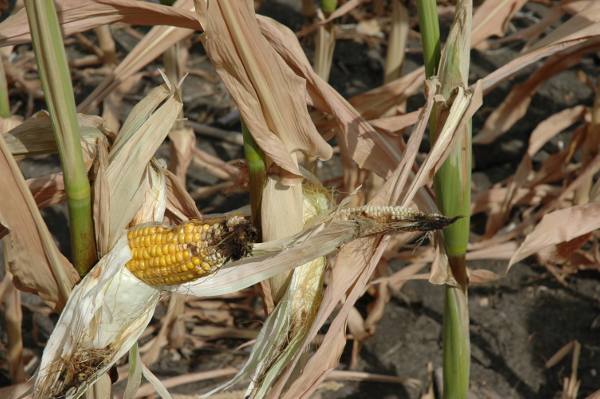
Aflatoxin can ruin a corn harvest as surely as a hail storm or a plague of locusts. Contamination may render the crop unmarketable and label production areas as undesirable supply sources.
Some Texas farmers understand all too well the stigma of aflatoxin and have endured the ignominy and have lost prime markets because of a reputation for too frequent instances of aflatoxin contamination.
They often feel at a loss, vulnerable to forces beyond their control, such as drought and heat stress. No curative treatment has been discovered for the fungus, but corn farmers do have options to decrease the potential for infection.
It takes a combination of plant host resistance, insect control, cultural practices, and biological treatments—a relatively new option—says Texas AgriLife Extension pathologist Tom Isakeit, who works out of the San Angelo Research and Extension Center.
“We need to use an integrated approach,” Isakeit told a farmer and industry audience at the recent Texas Plant Protection Association annual meeting in College Station.
He said plant resistance may play a somewhat minor role for now. “We have no resistance to the fungus,” he said, “but resistance to insect pests may be helpful. But insect damage is not the sole reason for aflatoxin contamination.”
He said variety selection remains important, however. A tight husk, for instance, helps keep the contaminant out. “An ear that turns down is also an advantage, as is a hard endosperm. The fungus enters injured seed.
“Trials have shown a small beneficial effect from Bt genes. But do not rely on transgenic hybrids to control mycotoxins,” he said.
He said some hybrids appear to be “more prone to contamination.”
Cultural practices are also important. “Farmers should produce the best crop possible,” Isakeit said. He recommends producers break hardpans, use minimum tillage to conserve moisture, plant during the optimum planting window, maintain optimum nitrogen and control insects and weeds.
Biological controls recently have produced encouraging results. “We have atoxic strains of aspergillus that outcompetes the toxic strain,” Isakeit said. “We have to get it established first.”
Biologicals
Texas farmers have tried two products, Afla-Guard, a recently-labeled Syngenta product, and AF-36, a product from an Arizona farmers cooperative labeled for cotton but not yet corn. Both have shown promise in reducing aflatoxin levels in corn.
“But they can fail,” Isakeit said. “They both need moisture to sporulate and may fail because of drought. The material also may wash out of the soil in heavy rain.”
He said the materials are applied to the soil surface. “We are working to see how early we can apply the material. If we put it out too early, it uses up all available nutrients and if we put it out too late, it’s not competitive.”
Both products are applied on grain, either wheat or barley.
Recent experiments bear out Isakeit’s point that conditions and timing are critical factors. A trial at Weslaco “significantly reduced the amount of aflatoxin,” he said. “Another test showed no significant difference. We applied that one too late.”
He said applying the material before tasselling is relatively easy and works well.
Growers and researchers have wondered if the material will persist in the soil from one season to the next. “We don’t know yet,” Isakeit said.
“This product is not the whole answer but combined with cultural practices and the right genetics it will help,” said David Ross, Syngenta. Company tests have been reassuring, he said.
“Trials show an average of 89 percent reduction in aflatoxin levels,” he said. “That’s across multiple states. In Texas, with 58 test sites, we saw an 80 percent average reduction.”
Ross said reducing aflatoxin contamination will improve marketability and provide better access to premium markets.
Isakeit said application rate is about 10 pounds per acre. “That’s about $10 per acre,” Ross said.
After harvest care
Farmers also must take care during and after harvest to prevent contamination. “We recommend field segregation during harvest,” Isakeit said. “Don’t mix grain from a good field with grain from an infected one. Also, adjust the combine settings so it knocks out damaged, broken kernels.”
Early harvest and artificial drying reduce infection potential. “We’re just not set up for that in Texas,” he said.
Isakeit said some producers may opt to bale aflatoxin contaminated corn for hay. “That’s risky. Those little ears may contain aflatoxin.”
He added other precautions. “Maintain proper storage conditions after harvest. Put grain into storage at less than 15 percent moisture and keep moisture out.” Blending with clean corn may be an option.
Management is imperative, Ross said. “Aflatoxin is highly toxic and highly regulated as a potential carcinogen. Levels greater than 20 parts per billion can’t be used for human food.”
About the Author(s)
You May Also Like






